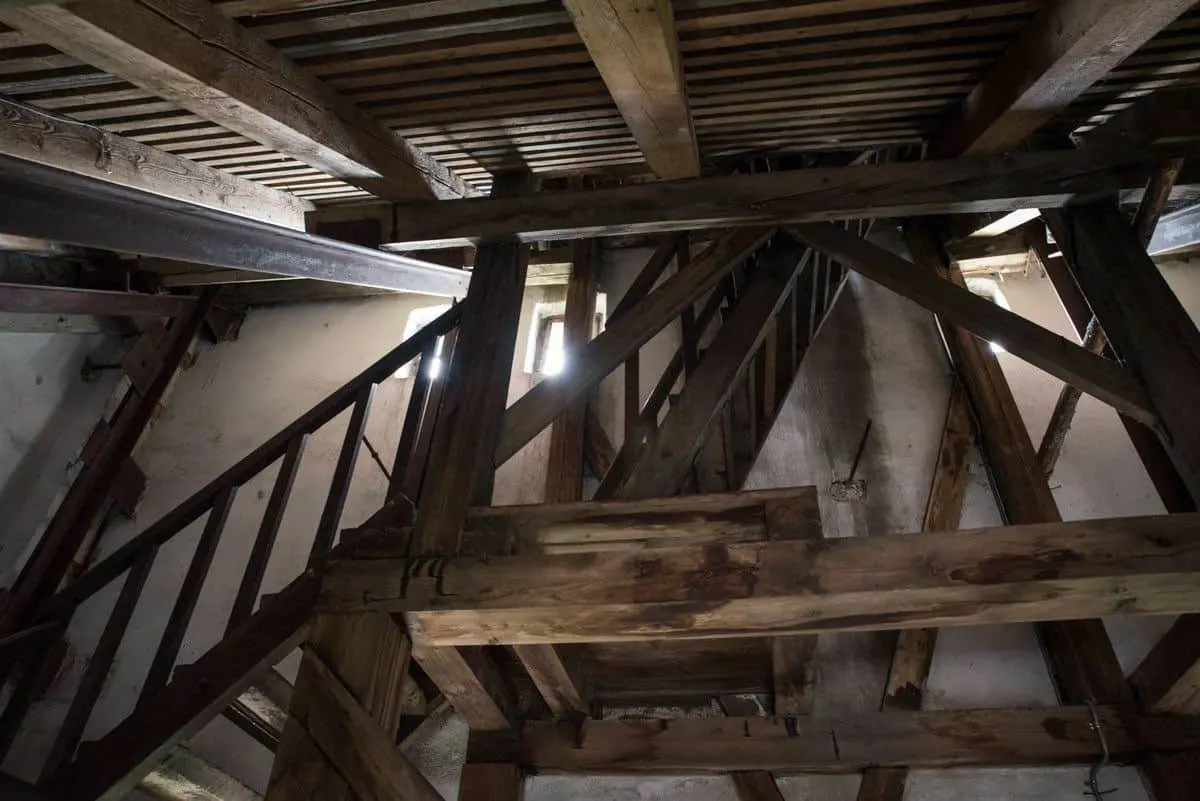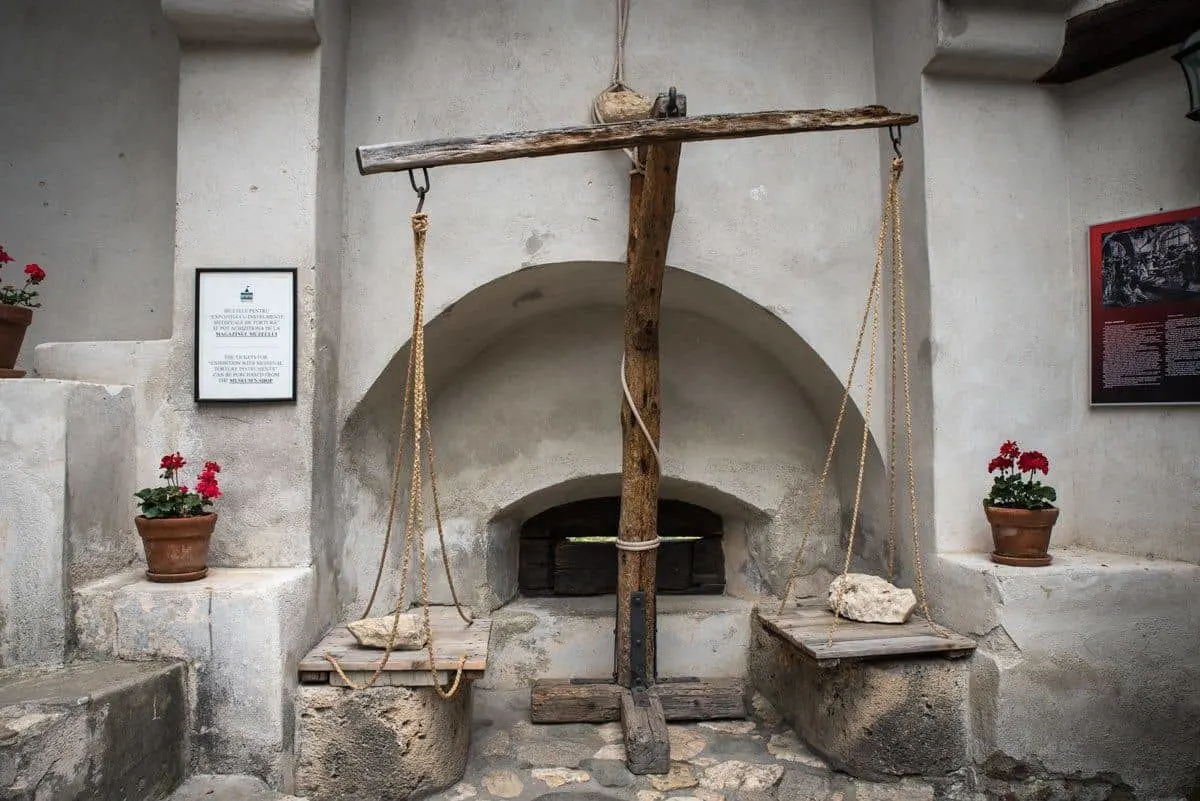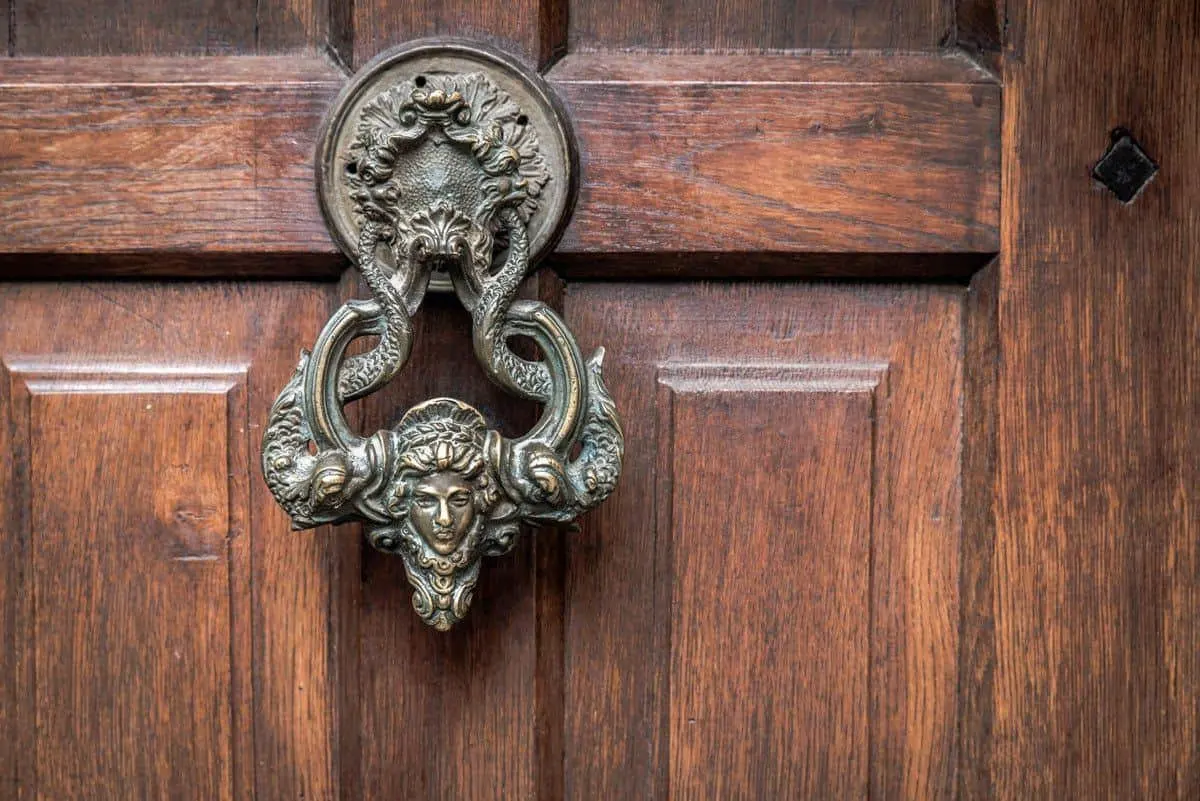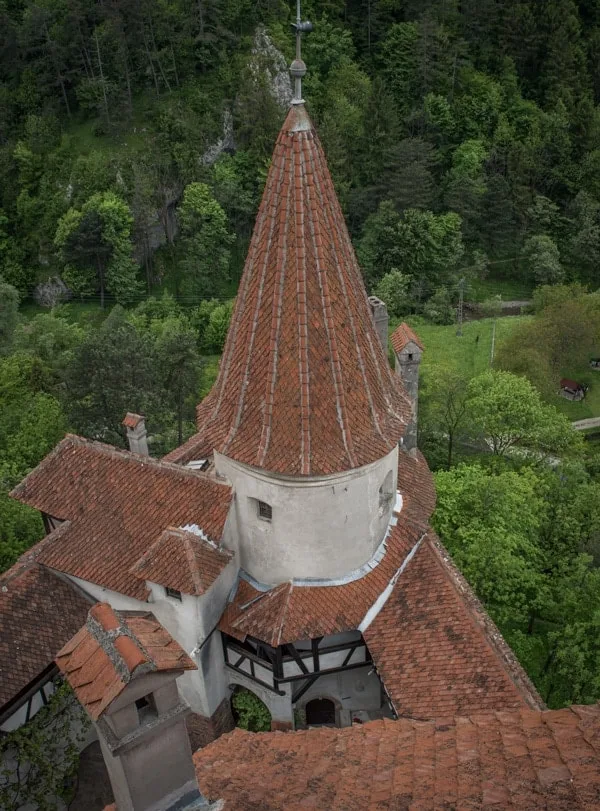Welcome to Bran Castle, Transylvania. Commonly known as Dracula’s Castle, discover the real story behind the magnificent Bran Castle and their most famous fictional resident.
“I want you to believe…to believe in things that you cannot.”
― Bram Stoker, Dracula
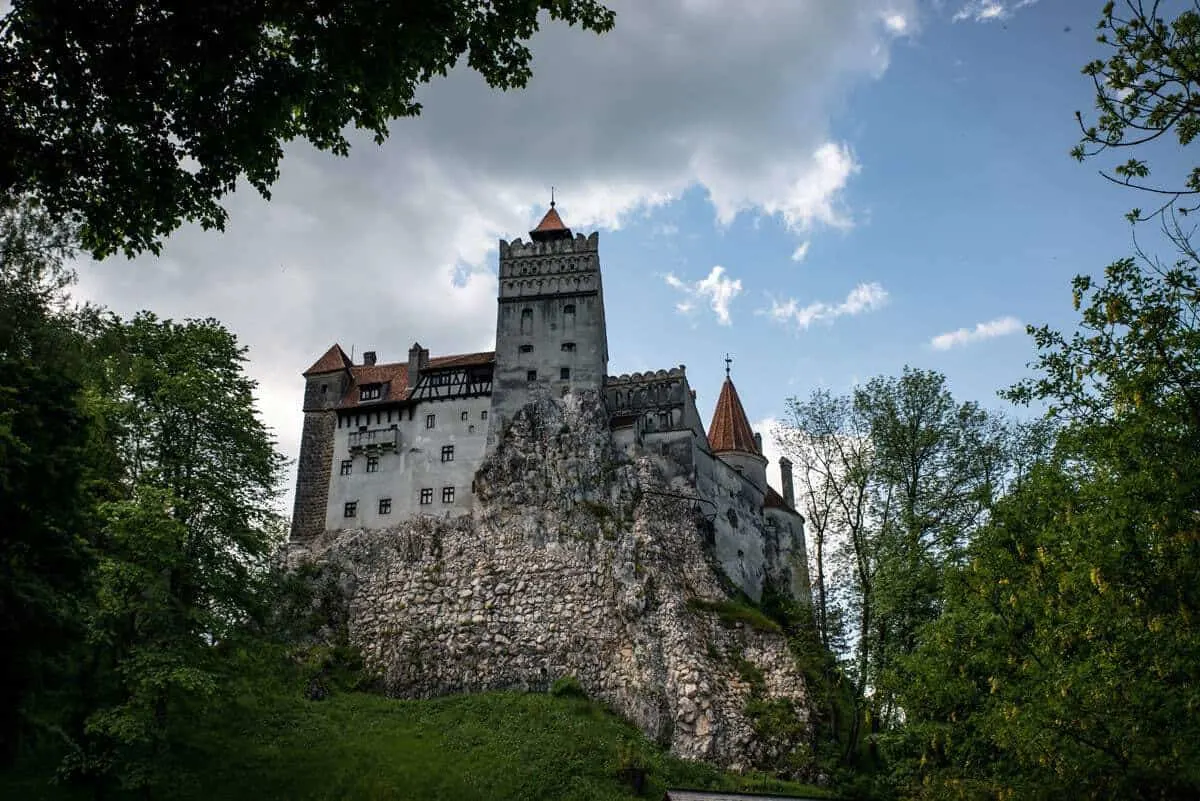
Tips for Visiting Bran Castle
- During peak season, mid-July to late August, you can expect big crowds at Bran Castle and possible waiting times.
- You will have to wait to enter the castle grounds and then again to enter the actual castle.
- We recommend arriving early during these times to beat the crowds.
Information on opening hours further on.
Related: Discover the best time to visit Europe with tips on what to by season.
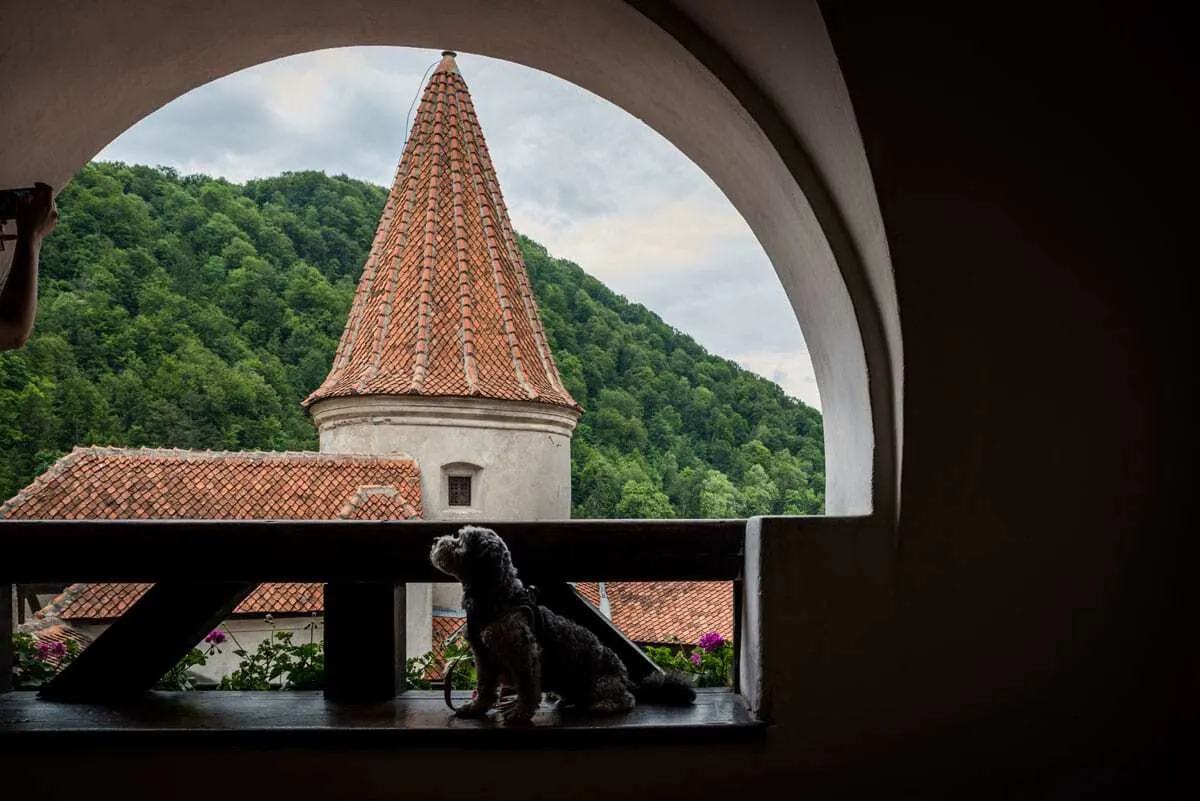
Bran Castle Facts
Bran Castle is in the Brasov County in Transylvania. One of the most beautiful and touristic areas of Romania.
Train: You can travel from Bucharest to Brasov in 3.5 hours by train for approx 40Lei (€10). Trains depart hourly.
Bus: Buses to Bran depart Brasov’s bus terminal No. 2. Approx. 45 min See the Bran Castle site for up-to-date information.
Driving from Bucharest to Bran Castle is just over 3 hours.
Driving from Brasov to Bran Castle will take approx. 40 minutes.
Tour: There are many Bucharest to Bran Castle tours as well as day trips from Brasov. Many of the day trips to Transylvania and Bran Castle will also include Peles Castle. See tour information below.
No, nobody lives in Bran Castle. In 2009, Bran Castle became the first private museum in Romania after being returned to the heirs of the Habsburg family in 2006. The castle was originally seized by the communist regime in 1948 with the expulsion of the royal family.
Bran Castle is open daily although opening hours may vary according to the season. See The Official Bran Castle site for opening hours.
No, Bran Castle has no accommodations for overnight guests. However, Bran Castle occasionally runs events, usually coinciding with Halloween, offering the opportunity to sleep in the castle overnight.
Expect 45Lei (~9€) for standard adult entry. Discounts are available for seniors, students etc.
Bran Castle Tour Tip
It is possible to visit Bran Castle on a day tour from Bucharest which is the easiest way to visit Bran if you are not planning to stay in the Transylvania region.
Tours are full day and often include visits to the city of Brasov and the beautiful Peles Castle. Tours include return transfers and guides and many will include lunch and all entry fees. Tours start from as little as €30 pp for a full day trip. See a full range of tours here.
Recommended Travel Gear for Romania
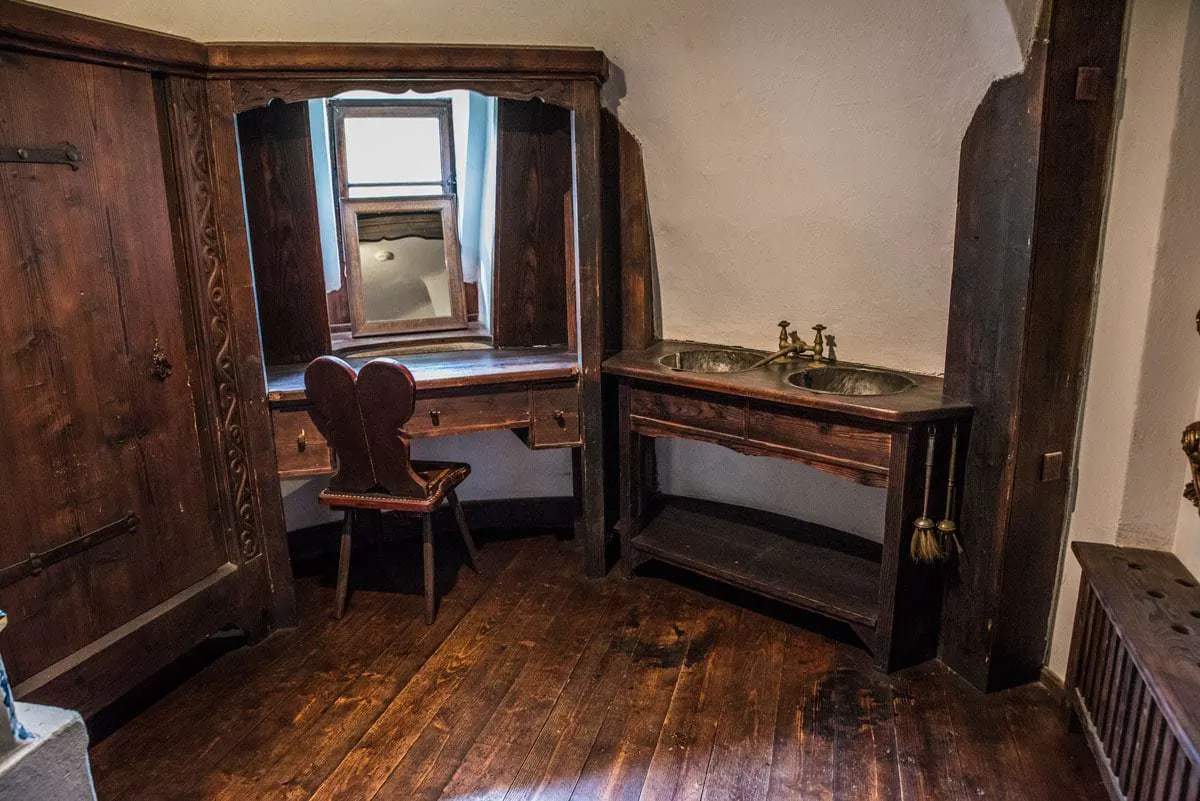
Bran Castle History
Bran Castle was initially built as a fortress in 1211. The castle’s position on the border of Transylvania gave it great military and commercial importance until the border of Transylvania moved in 1836.
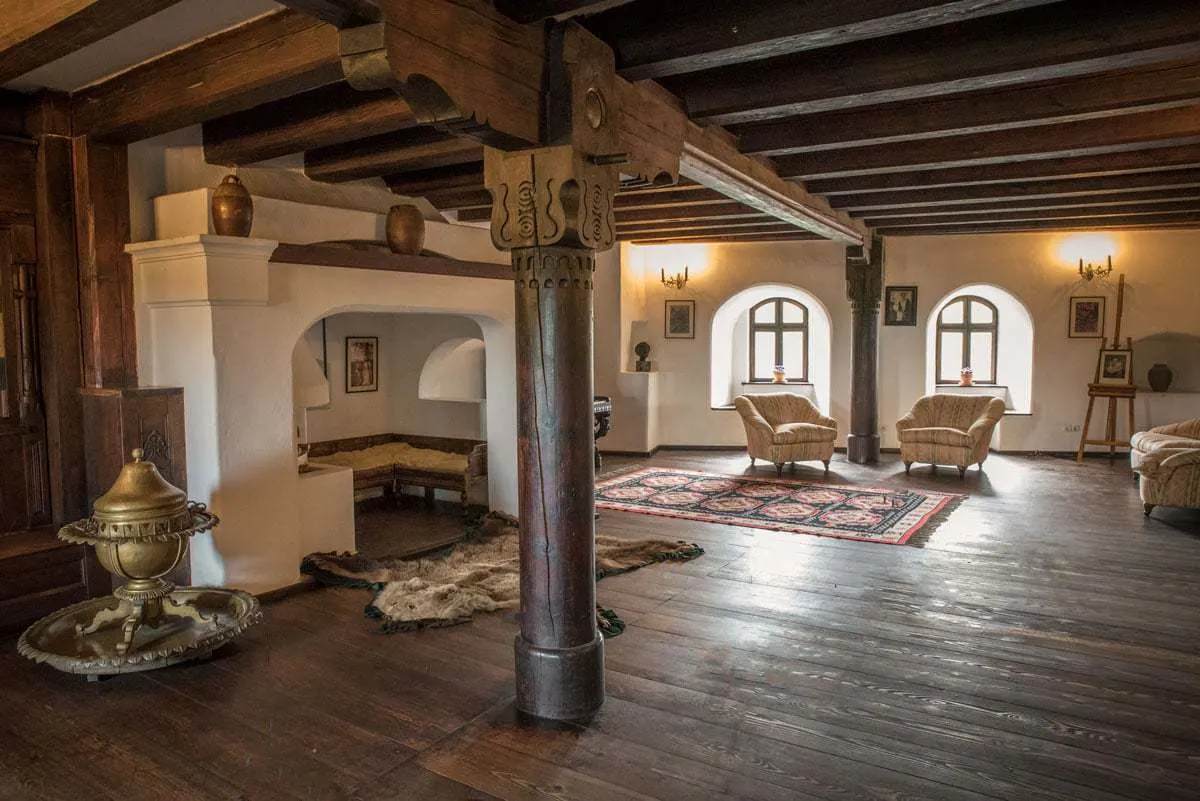
Bran Castle, The Royal Residence of Romania
Throughout the following years, the castle fell into decay. In 1920 it was given to Queen Maria of Romania after Transylvania became part of Greater Romania. After a nine-year restoration, Bran Castle remained a favourite royal residence until communism forced the royal family from Romania.
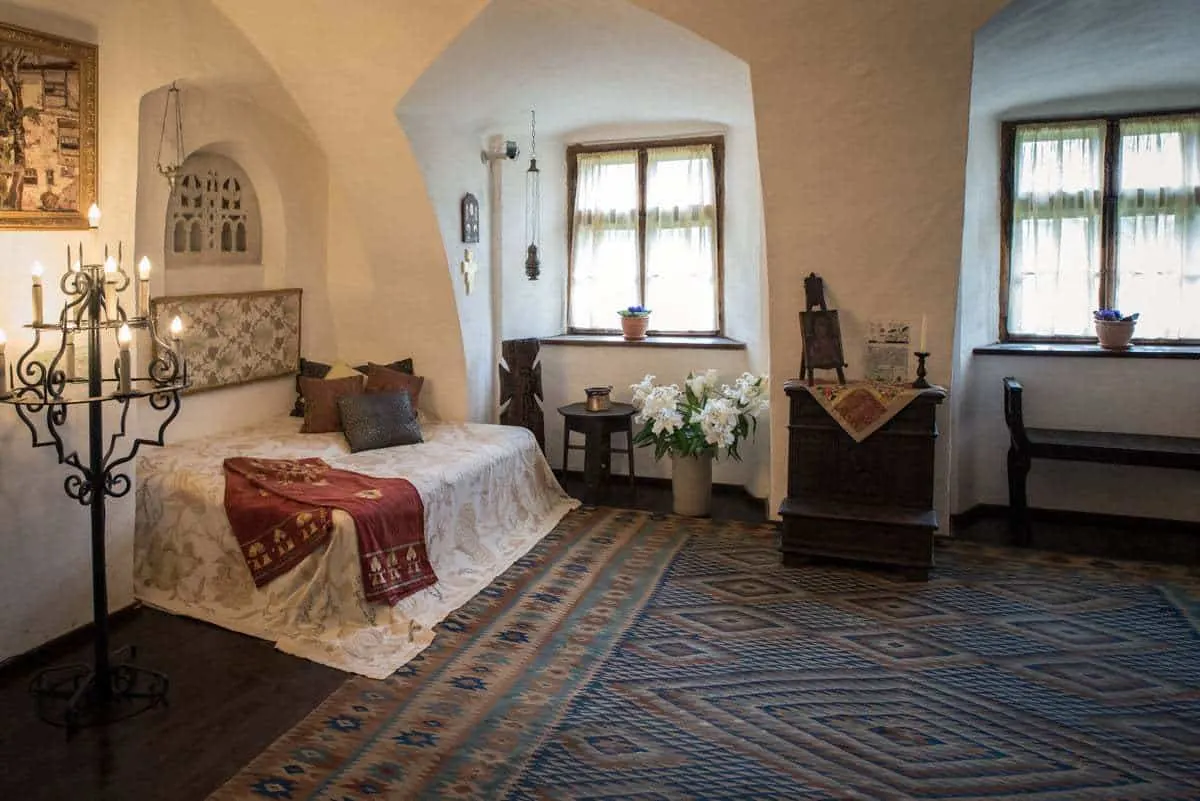
The castle has since been returned to the royal family and is once again privately owned.
While many of the items seized by the government during communist times were never recovered, the castle was restored as a museum dedicated to the memory of the royal family of Romania. One can’t help but feel the decor might be just a little Dracula inspired.
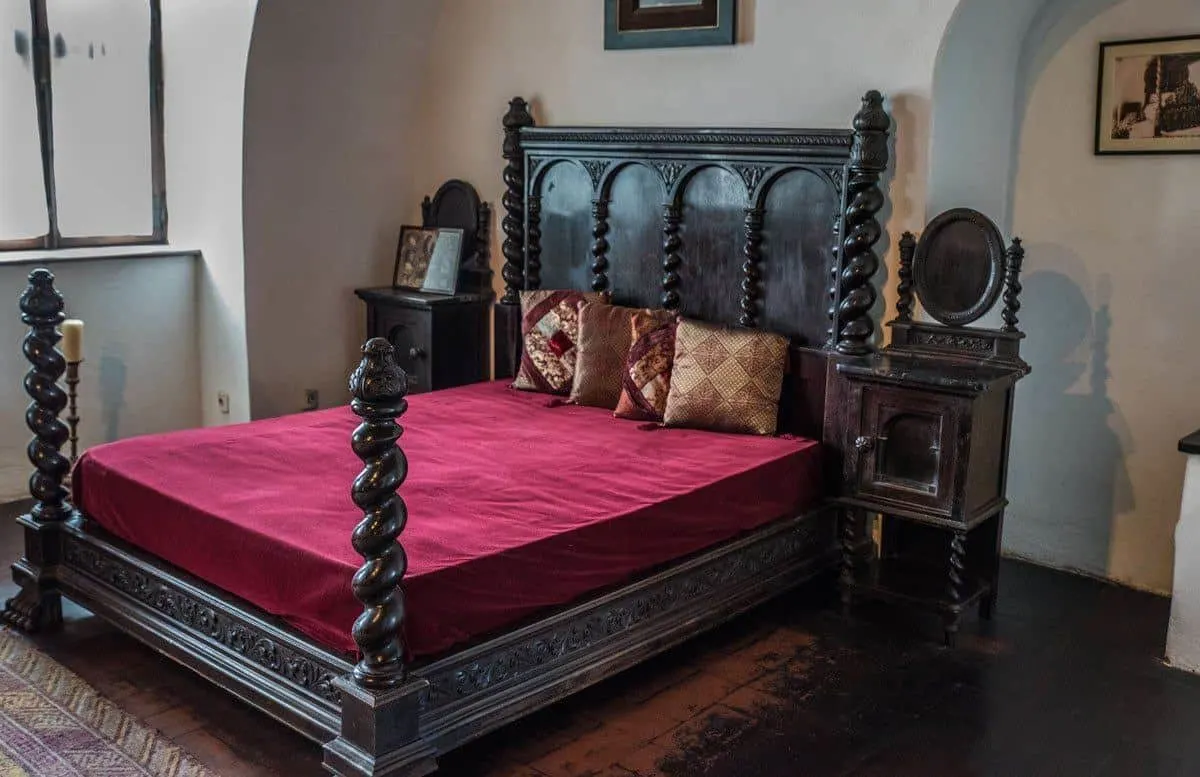
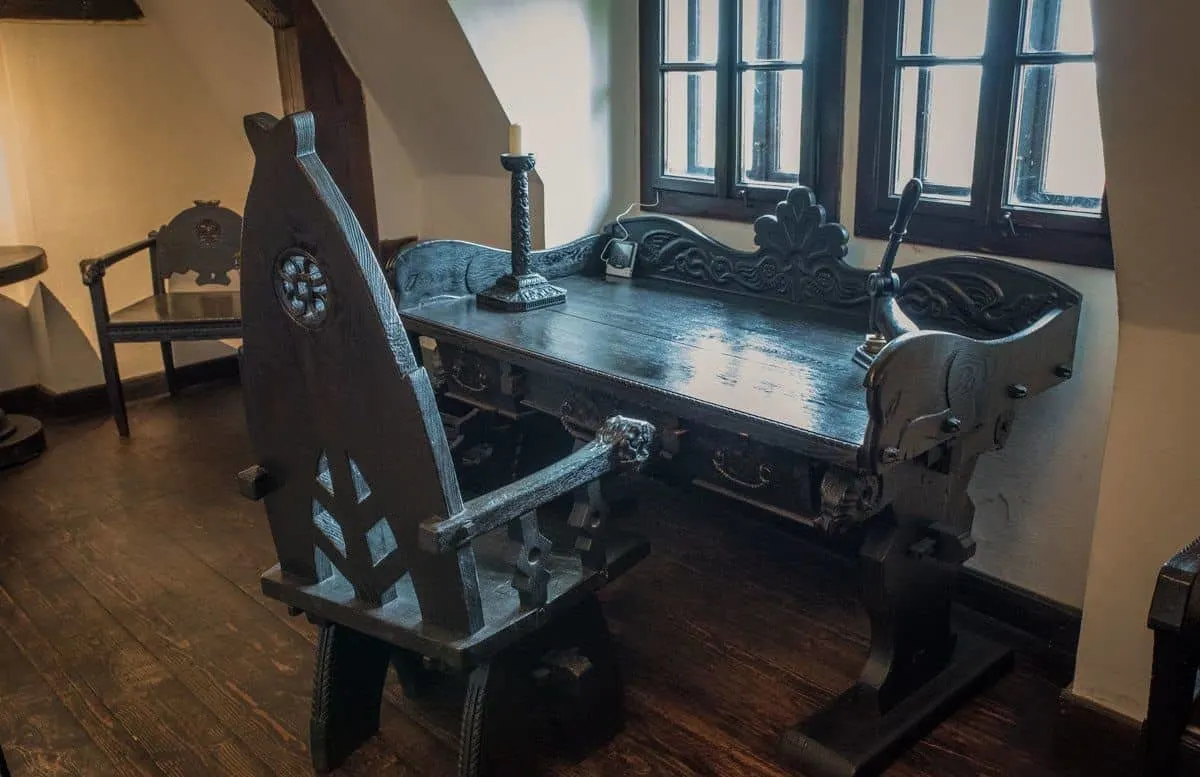
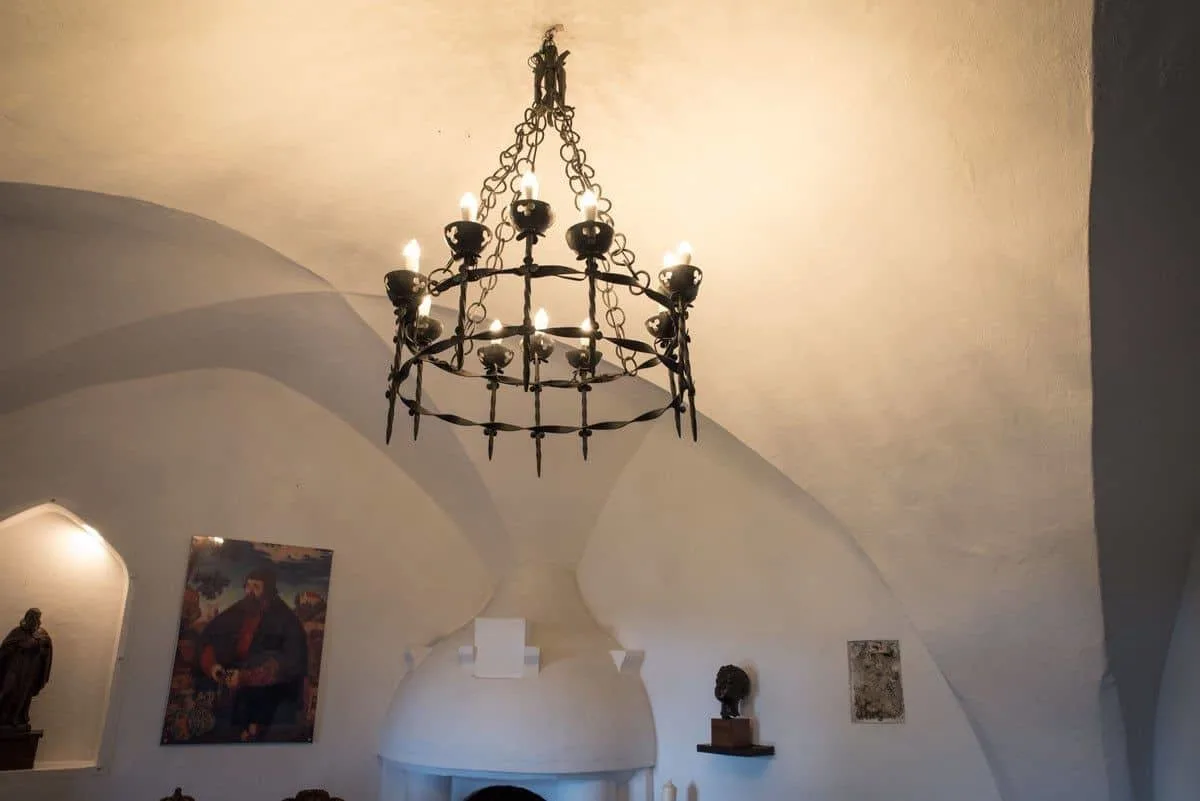
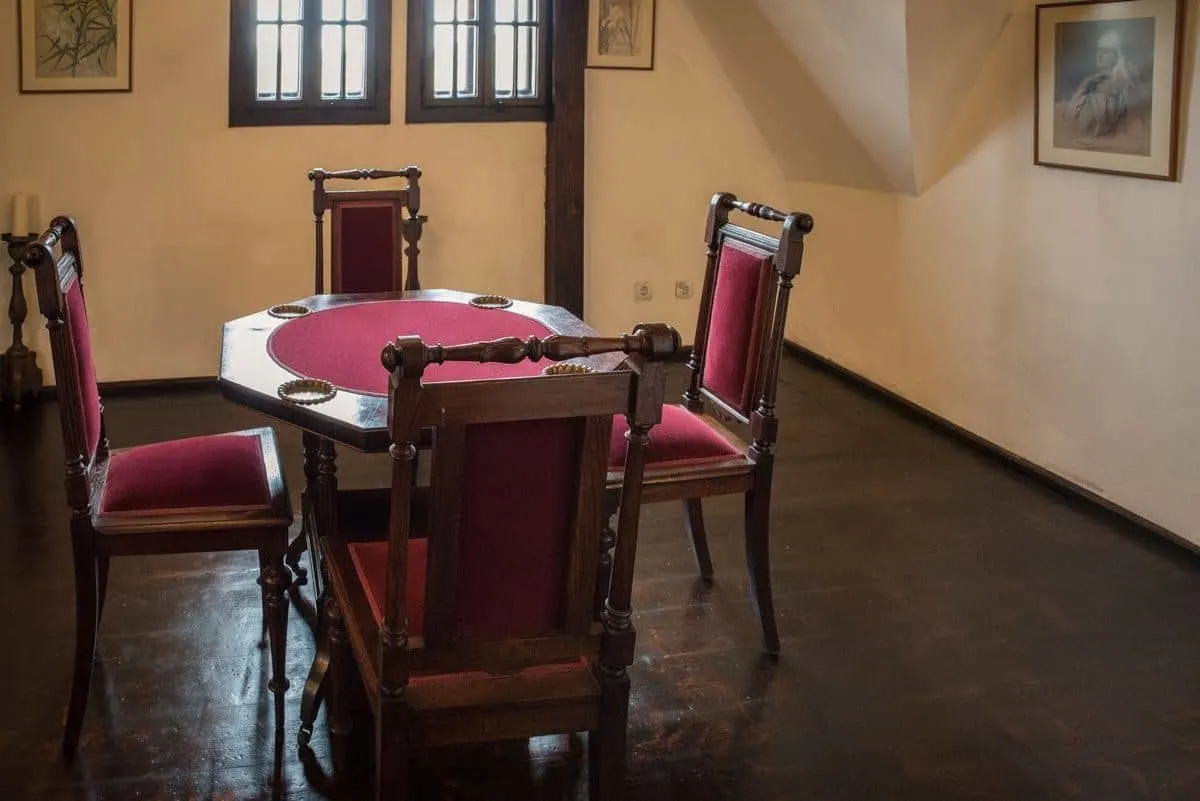
Inside Dracula’s Castle
Despite the foreboding exterior, the interior of Bran Castle is quite homely, in a castle kind of way.
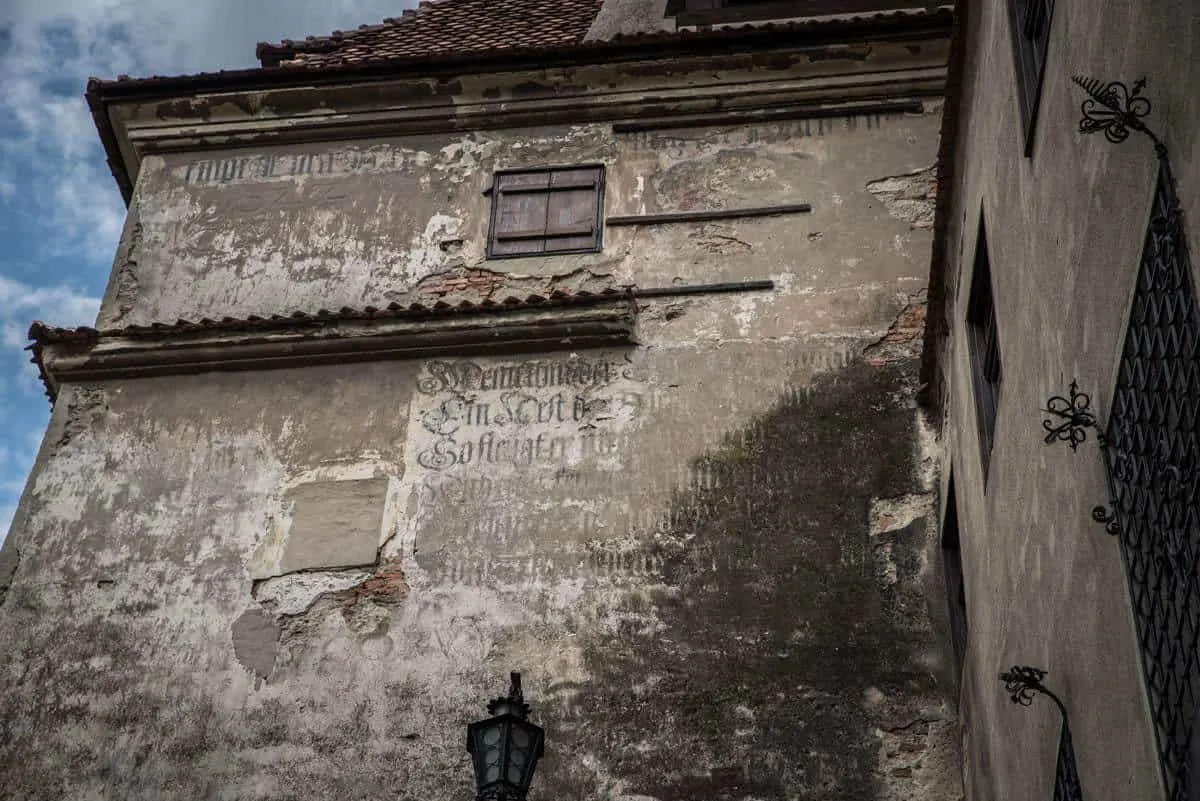
Exhibition of Medieval Instruments of Torture
Bran Castle is hosting a temporary exhibition of Medieval Instruments of Torture collected throughout Eastern Europe.
The exhibition is an additional entry to the castle but a fascinating insight into the times when the castle was at its political peak. Let’s just say; there is nothing funny about the instrument called the Spanish Tickler. An exhibition fitting the Count perhaps.
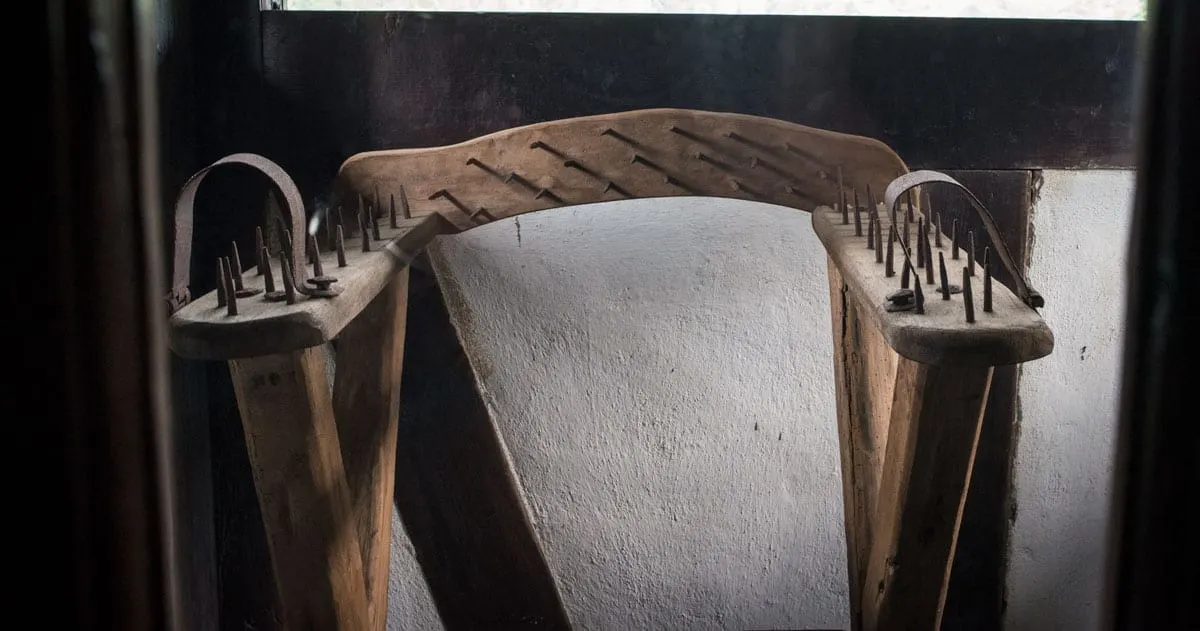
Special Events at Bran Castle
Bran Castle is not entirely about the business of Dracula. Surrounded by beautiful gardens and the stunning Transylvanian countryside, the castle is the perfect setting for outdoor events.
During the summer season, Bran Castle hosts outdoor events such as jazz and classical concerts, children’s fairytale events and special movie screenings on the castle grounds. At other times of the year, such as Halloween, the castle will host night tours. Sometimes, there is even the possibility to sleep in Bran Castle.
Check the official Bran Castle website for upcoming events.
Legends of Transylvania
The inspiration for the fictional character of Count Dracula is as ghoulish and intriguing as the story that made both Bram Stoker’s Dracula and Bran Castle (Dracula’s Castle) famous.
Folklore and History of Romania
Romanian history is steeped in supernatural folklore. It was the lore and legends of Transylvania that allowed Stoker to piece together his macabre tale. Bringing together a mix of myth and some sinister and infamous characters throughout Romanian history.
Bram Stoker and Transylvania
Bram Stoker never actually travelled to Romania but describes many real locations and captures the essence of the Transylvanian landscape. So much so, it is easy to be swept up in the legend as you drive through the Carpathian Mountains of Romania, past dark, ancient forests, on your way to Bran Castle.
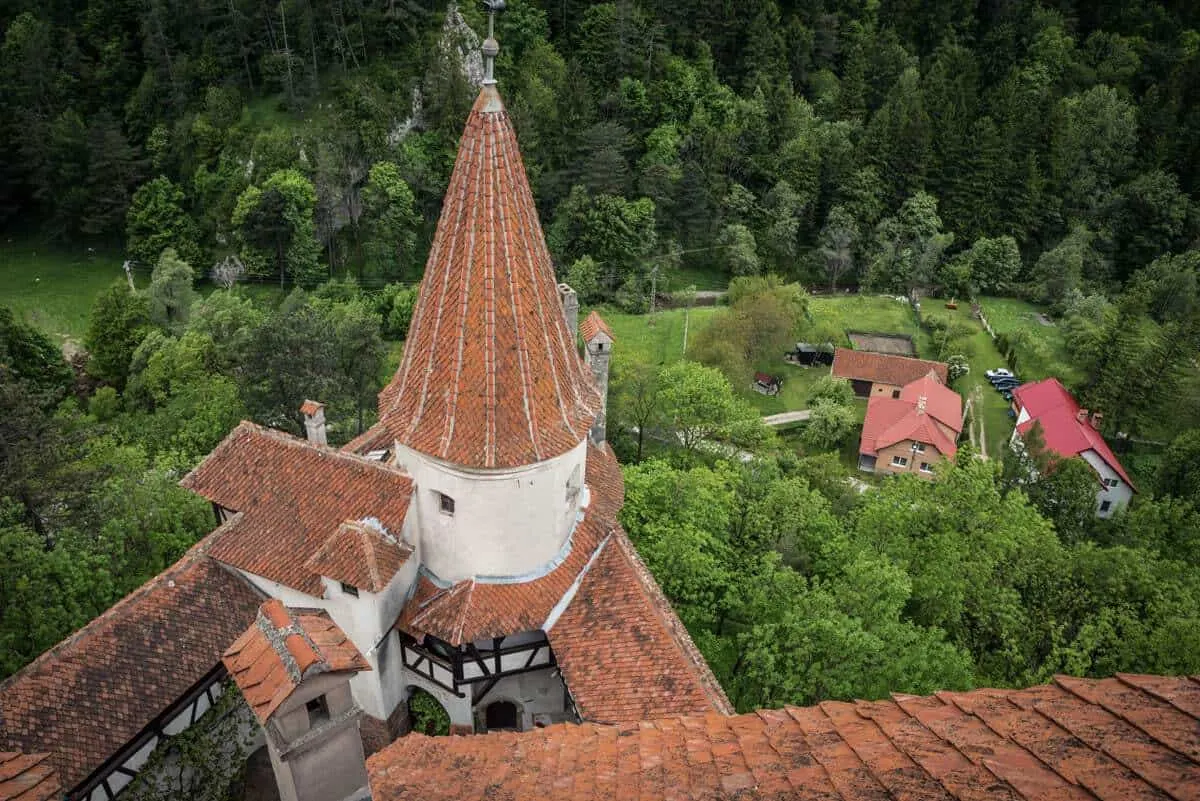
The Legend of Dracula. The Inspiration for Dracula
Two of the most infamous figures in Romanian history formed the inspiration for the character of Count Dracula.
Vlad the Impaler
First, we have the son of Vlad Dracul, Vlad Tepes Dracula, or Vlad the Impaler as he is best known. (Dracul, is a kind of nickname meaning bad blood or son of Satan)
Serial Killer Countess Elizabeth Bathory
Then we have one of the most prolific female serial killers in history, Countess Elizabeth Bathory who was also a big inspiration for the character of The Count.
Elizabeth Bathory was responsible for torturing and killing hundreds of young women, possibly as many as 650 between 1585 and 1610. The countess displayed vampiric tendencies by drinking and bathing in the blood of young virgins in the belief she could attain eternal youth. There was also speculation her bloodthirsty pursuits were a bid to cure or treat epilepsy, an illness she had suffered since childhood. A popular epilepsy treatment of the time was to rub blood, or a mix of blood and skull from non-sufferers on the lips of the person with epilepsy during an episode.
The Bathory family ruled Transylvania as an independent principality of the Kingdom of Hungary (now Hungary, Slovakia, and Romania), so she never faced trial for the murders. Although not tried, authorities later imprisoned her until her death. So, in essence, Dracula was just as much a She as a He.
How Did Bran Castle Become the Home of Dracula?
It is said; the only association these historical characters have with Bran Castle is when Vlad the Impaler tried to overrun the fortress. It was possible he was eventually imprisoned in the dungeon there.
It is only through the detailed descriptions of the castle in Stoker’s book, and its location does Bran Castle become the home of Dracula.
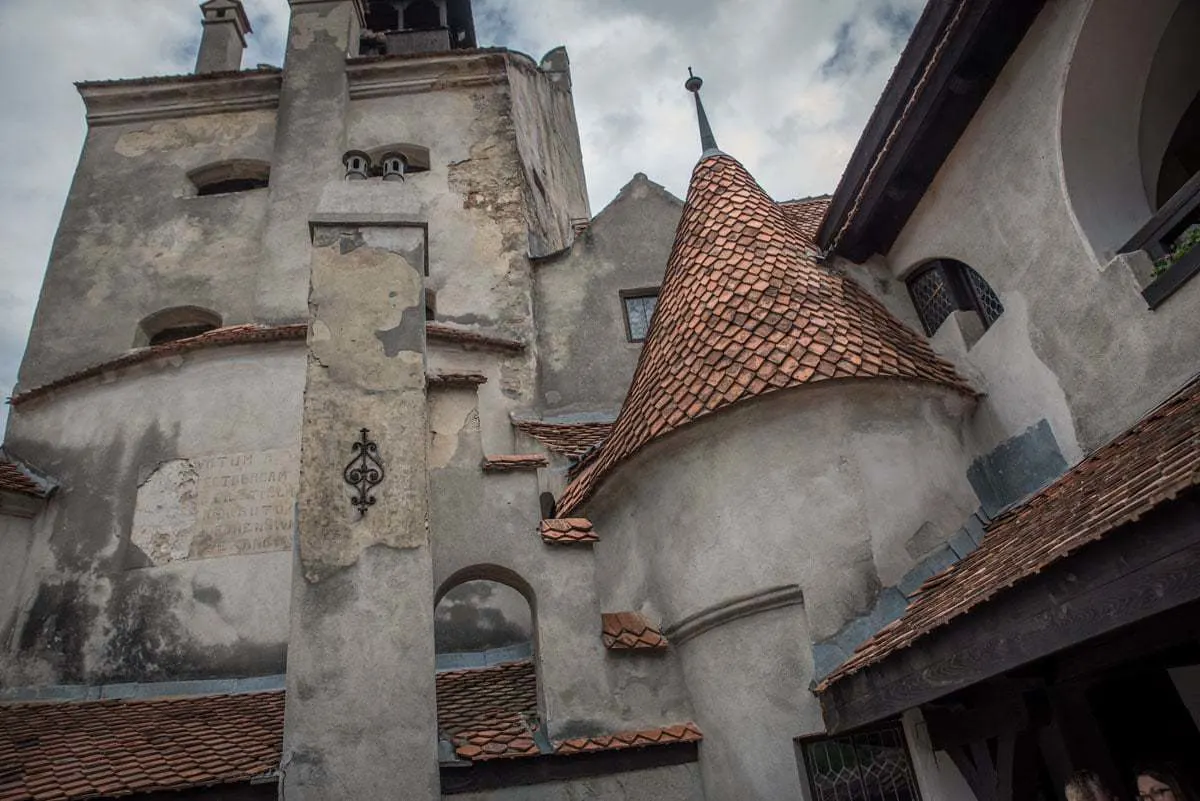
The Popularity of Dracula: Vampire Hunters
Interestingly enough, due to communism, most Romanians were unaware of the interest in Bran Castle and Transylvania until long after communism fell.
Supernatural enthusiasts would come to Transylvania during communist times in search of Dracula’s castle, and to explore the supernatural phenomenon supposedly associated with the region. Most left disappointed at the lack of interest given to the subject by most Romanians.
More recently, though, Transylvania has embraced the popularity of Dracula and welcomes vampire hunters with open arms.
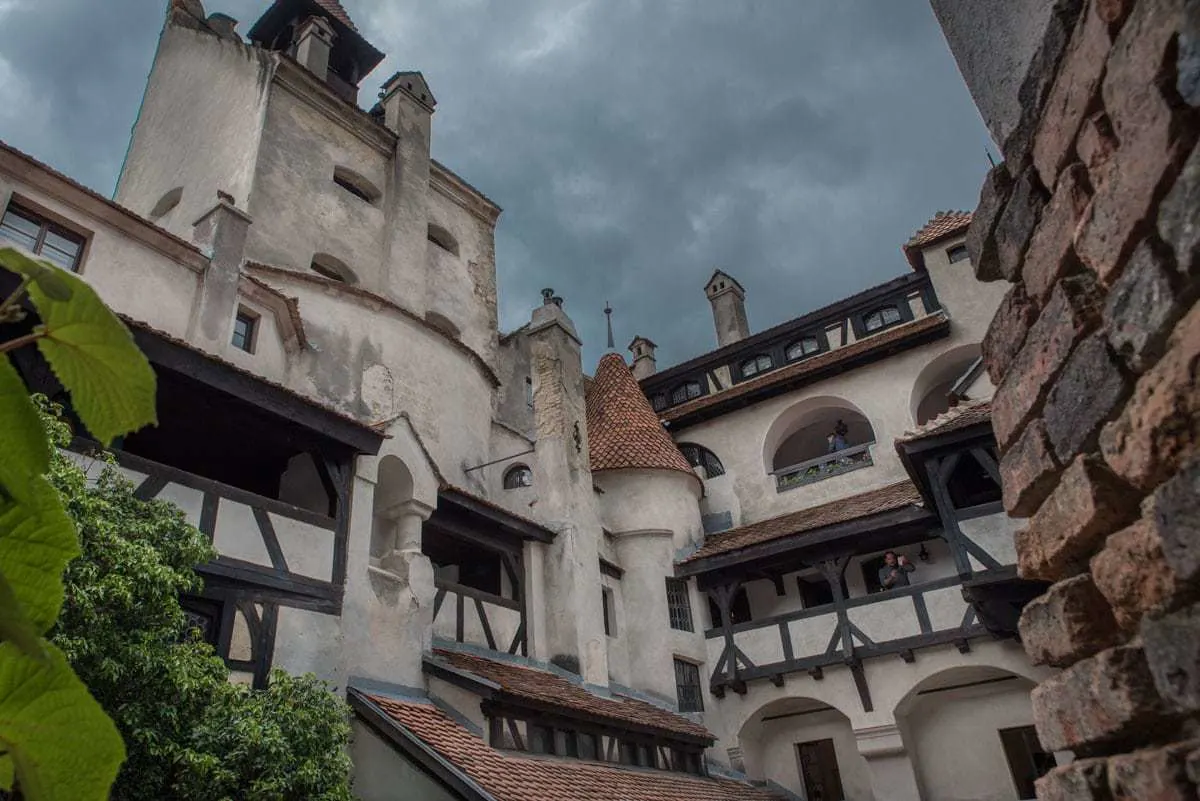
Bran Castle is one of the most fascinating castles in Europe. The landscape that leads you there, the picturesque town, and the fascinating stories that surround the foreboding and regal residence.
If you ever considered visiting Romania, do it for nothing else than to visit the Transylvania region.
Discover More Beautiful Romanian Countryside on the Danube Delta
